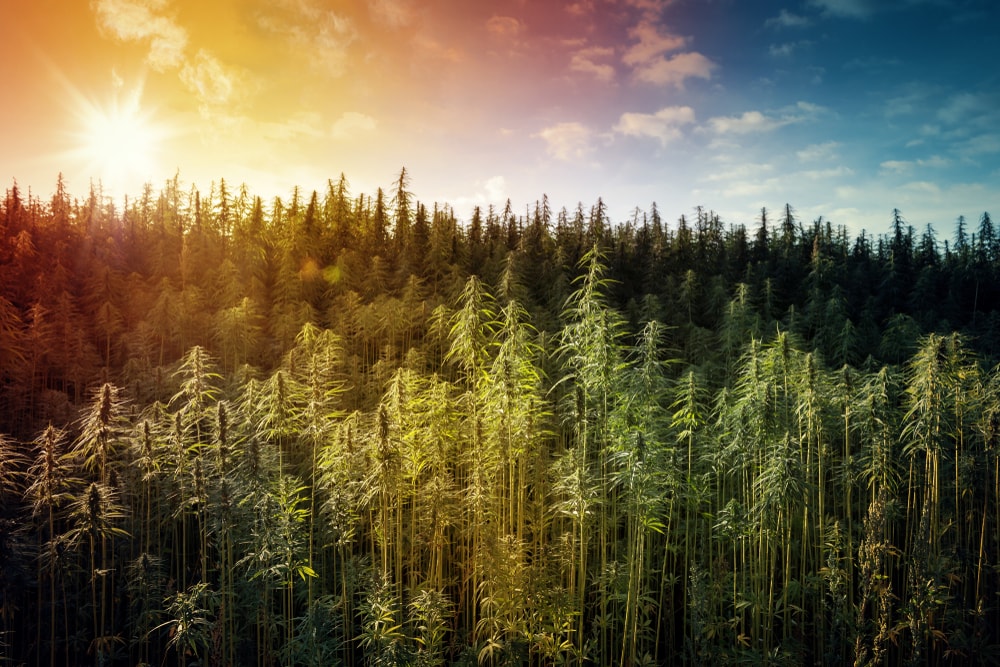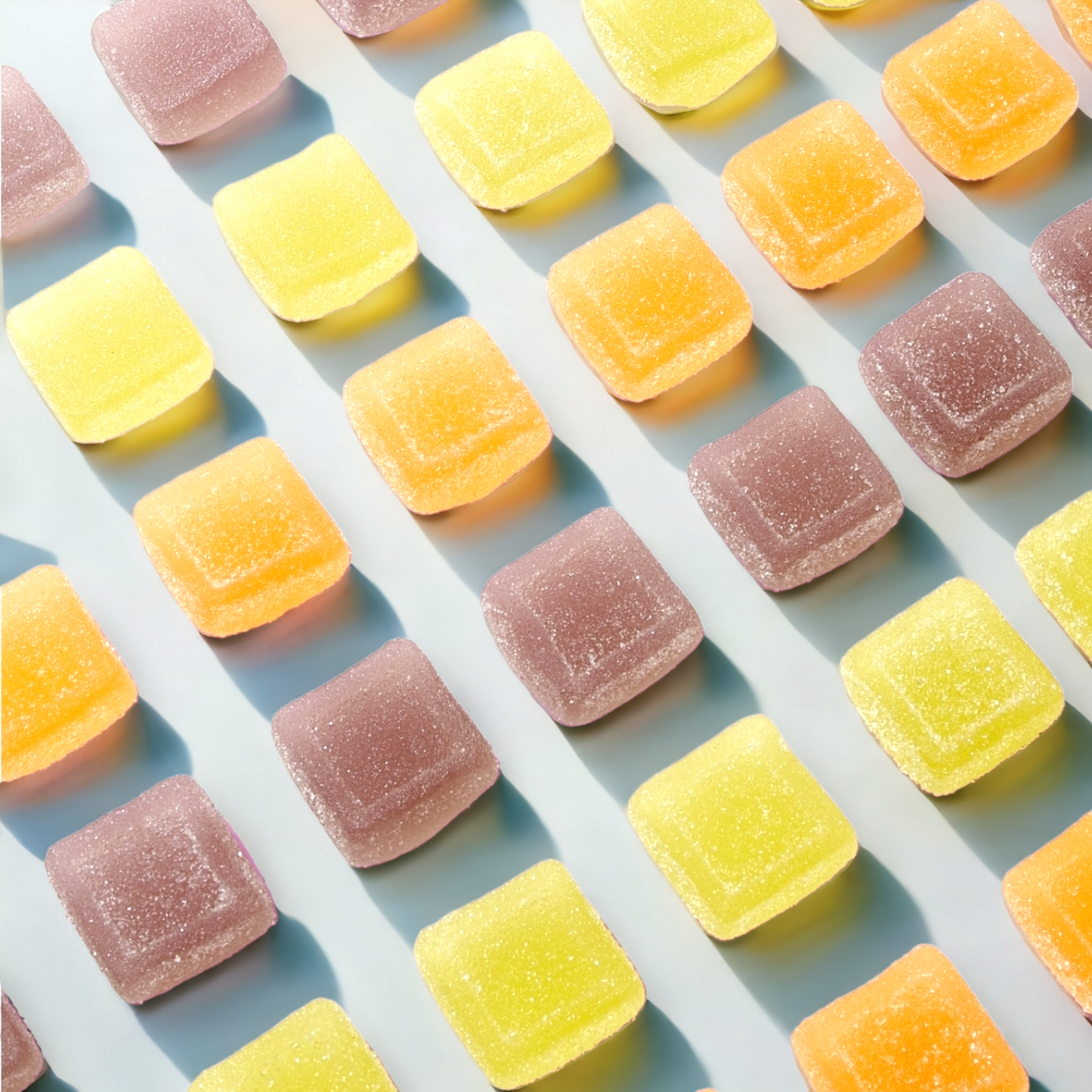Hemp farming is one of the most lucrative industrial and textile crops you can start on the US right now. According to the 2018 Farm Bill, CBD and hemp are completely legal to grow and sell in the United States, creating a billion dollar market that is expected to grow exponentially. Whether you plan growing industrial hemp for its grain, fiber production, seeds or CBD oils, the process of growing it, from seed to harvest, is the same. If you want to start a hemp farm, read our handy guide below.
Hemp can thrive in most environments, the main exceptions being extreme desert climates and high mountain regions. The best growing conditions for hemp, however, are warm-weather areas with well-drained soil rich in organic material. Avoid ground with excessively wet climate or soil. Areas with heavy rains and soils that remain saturated following rainfall. Seek ground with high fertility and low weed pressure.
It is advisable to get your soil tested before you cultivate your crop. Make sure to test for elemental sulfur, potassium sulfate and rock phosphate levels at the least to make sure they are not too high and, therefore, need abating before planting. For the most reliable readings, perform soil tests either late in autumn or early in spring.
The growing cycle for hemp is approximately 108 to 120 days, during which these growing conditions should remain relatively stable and consistent.

Tilling the soil before planting hemp seeds is particularly vital given there are no herbicides labeled for use preparing soil for planting hemp. Prepare a firm, shallow bed for the most uniformity in seeding depths, not unlike for planting clover or alfalfa.
It is best to sow hemp seeds directly in the soil where they are to grow rather than starting them in pots and, then, transplanting them into the ground as they outgrow their pots. Plant hemp seeds following the average date of the final frost when soil temperatures reliably achieve at least 50 degrees Fahrenheit. In most U.S. zones, this occurs approximately between May and June. This will help ensure seeds germinate and emerge quickly and grow into taller plants with a greater yield potential.
Sow seeds relatively closely together, as close as four inches, depending on the size of your growing space and the yield of your desired crop. Plant seeds at a depth of around 1/2 to 3/4 inch. Aim for seeding in 15-inch to 30-inch rows at a rate of 25 to 35 pounds per acre. If you sow seeds mechanically, you can use conventional seeding equipment to plant hemp seeds with no other special equipment required. Either a grain drill or a corn planter will suffice. Once the seeds are planted, it is recommended to roll and pack the soil.
Make sure to irrigate your planted seeds sufficiently, especially during their first six weeks in the soil. Even though hemp plants are generally drought tolerant, they can be more fragile and sensitive to dryness in those early days.
The regulations for pesticide use in farming of any type are primarily federal in nature, though your state may have more stringent pesticide regulations still. Review complete lists of herbicides, fungicides, insecticides and other pest-control products permitted federally and in your state at the National Pesticide Information Center.
Hemp is a prime plant to grow organically since it doesn’t require a great deal of supplementary nutrition and is reasonably pest- and disease-resistant. Hemp’s growth also tends to outpace that of surrounding weeds, so it doesn’t require a great deal of cultivation by hand like other organic crops.
Generally speaking there is no need to obtain any special farming equipment for hemp growing. However, you may need special machinery for hemp grown for fiber, since hemp stalks must be processed differently. The problem is that this type of equipment might not always be available in states where hemp farming is not widespread. You can avoid the costly purchase of new equipment by contacting a company that will process your raw plant material. At Industrial Hemp Farms, we provide hemp processing services at affordable rates.
After about 90 to 100 days in the ground, the head of the hemp plant is considered to have fully matured. As the period arrives, you will start to observe seed heads maturing from the bottom and moving upward to reach completion. Once seed bracts have fully matured, they expose the seeds they contain, allowing you to air dry them naturally. At this point, approximately 100 to 120 days after the seeds were planted (around September or October), the plant is primed for harvest.
As with seeding machinery, standard combines are adequate harvesting equipment and no other special machinery is required. If desired, you could use a rotary combine with a draper header instead. To minimize fiber wrapping, harvest only when grain moisture is between 12 and 18 percent. Set your combine to settings similar to those for harvesting canola or wheat. To minimize how much fiber enters the combine, cut plants immediately below the head of the grain. Growing conventional (inorganic) hemp, you can expect to yield approximately 1,000 pounds per acre. Yields for organically grown hemp are closer to 500 pounds per acre.
To harvest hemp fiber, wait one or two days minimum after harvesting the grain and ideally until the following spring. Bale hemp fiber at no greater than 15% moisture in big square bales. Expect to yield approximately one to three tons of hemp fiber per acre.
Once you’ve harvested the hemp, cleanse all foreign material from the grain and prepare it for storage until the time you’re ready to process it. Make sure it is properly aerated immediately to avoid spoiling. Dry hemp grain to approximately 9% moisture. Best for drying hemp is a belt conveyor, though you can use an auger as well, as long as you run it slow and full. This will help keep seeds from cracking.
According to Cornell University, farming hemp tends to yield a profit of approximately $130 to $730 per acre. You can produce multiple hemp products for the market from a single plant by making use of its roots, leaves, flowers, stalks, and seeds. Growing organic hemp also expands the range of marketable products you can produce. Whatever your intended use for your hemp crops, it is wise to set up a contract with one or more buyers ahead of time so you know your products will have a venue for distribution.
Even though hemp has less than 0.3 percent of psychoactive THC, cultivating it and extracting CBD from it was strictly prohibited by the Federal Government. To grow hemp legally in a US state, you must still contact city, county and local zoning agencies and officials regarding any regulations, codes and conveyances with which you may need to comply. Also, you must make sure that your hemp has less than 0.3 percent of THC, as this is a basic prerequisite for staying compliant.
You may also need to apply for a permit and register with your state as an industrial hemp grower. To find out if you need to register with your state and get a permit before growing hemp, check with your state’s Department of Agriculture. Prospective hemp farmers may also need to present documentation proving your crops are to processed in the state. Note that shipping hemp and hemp products outside of your state is subject to federal laws and restrictions.
Starting a hemp farm entails a lot of hard work both in and out of the field. However, the profit margin can be enormous if you follow all the steps correctly. At Industrial Hemp Farms, we can provide you with end-to-end solutions for your farm, including seed production, hemp futures contracts, as well as processing services. Contact us or call us at 800-985-9587 to schedule an appointment at our facilities in Colorado Springs!
[starbox id=3]

